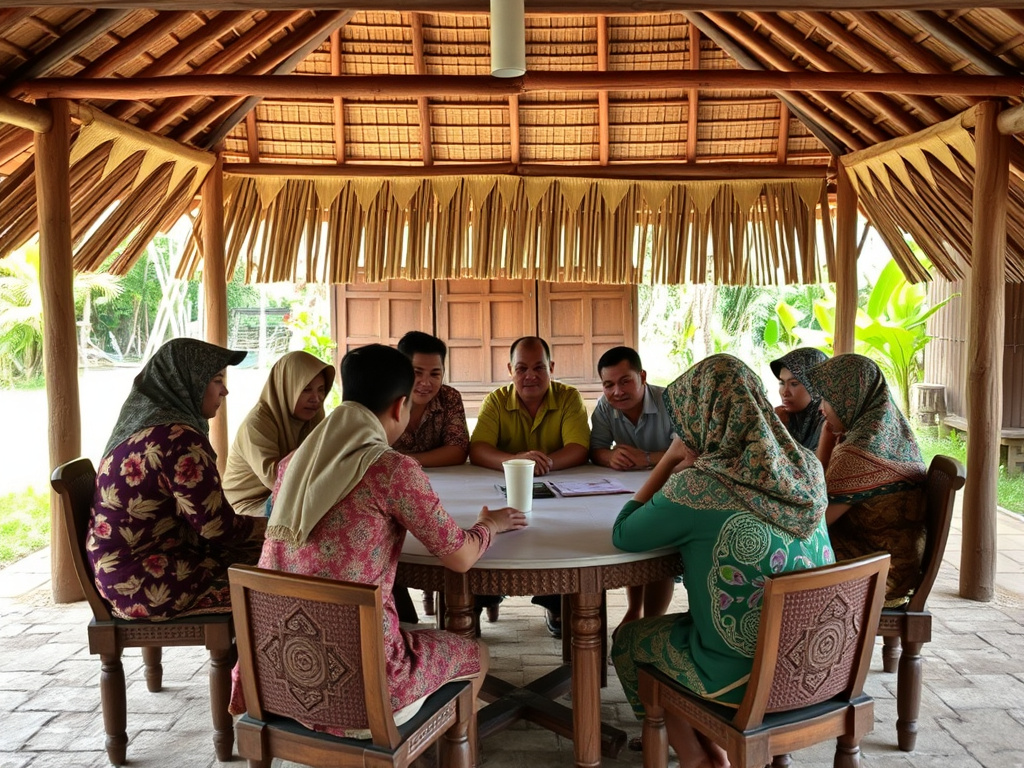In the heart of Borneo lies a community that has mastered the art of living in harmony with nature and among themselves—the Dayak tribe. Their traditional ways offer invaluable lessons on maintaining peace and unity within their villages, known as “desa” in Indonesian. This article delves into how “Suku Dayak dan Keharmonisan Desa” (Dayak Tribe and Village Harmony) is more than just a phrase; it’s a way of life.

Understanding the Dayak Tribe
The Dayak people are indigenous to Borneo, spread across Indonesia, Malaysia, and Brunei. They live in harmony with their environment, relying heavily on the forest for their livelihood. One key aspect of their culture is the emphasis on communal living and mutual respect.
- Traditional longhouses serve as communal dwellings.
- Community decisions are made through consensus-based discussions.
Their societal structure promotes equality and cooperation, laying the groundwork for harmonious village life.

Principles Behind Village Harmony
Several principles guide the Dayak tribe towards achieving and maintaining harmony within their communities:
- Respect for Nature: By understanding their dependence on natural resources, they adopt sustainable practices.
- Community Participation: Everyone plays a role in decision-making processes.
- Cultural Traditions: Rich cultural heritage fosters a sense of belonging and identity.
These elements work together to create a cohesive society where every individual feels valued.
| Aspect | Description |
|---|---|
| Environmental | Sustainable use of forest resources |
| Social | Inclusive decision-making |
| Cultural | Preservation of traditions through rituals |
By embracing these aspects, the Dayak tribe exemplifies how interconnectedness can lead to a balanced and peaceful existence.

Lessons from Suku Dayak
There are several takeaways from observing the Dayak tribe’s approach to village harmony:
- Interconnectedness Matters: Recognizing our connection to both the environment and each other leads to more thoughtful actions.
- Tradition Holds Value: Embracing cultural heritage enriches community bonds.
- Collective Decision-Making Works: Involving everyone ensures fairness and satisfaction.
Adopting some of these strategies could enhance community cohesion elsewhere.

Challenges Ahead
Despite their successes, the Dayak tribe faces challenges such as deforestation and modernization pressures. Balancing progress with preservation remains crucial.
- Protecting ancestral lands against encroachment.
- Adapting traditions without losing essence.
Finding solutions requires careful consideration and collaboration.

Conclusion
The story of “Suku Dayak dan Keharmonisan Desa” serves as a powerful reminder of what can be achieved when humans live in sync with their surroundings and prioritize collective well-being. As we move forward, there’s much we can learn from the Dayak tribe about fostering harmony within our own communities.
Key Takeaways:
- Emphasize communal participation in decision-making.
- Respect and preserve natural environments.
- Cherish cultural traditions as pillars of identity.
By integrating these values, we pave the way for more unified and environmentally conscious societies.

Leave a Reply